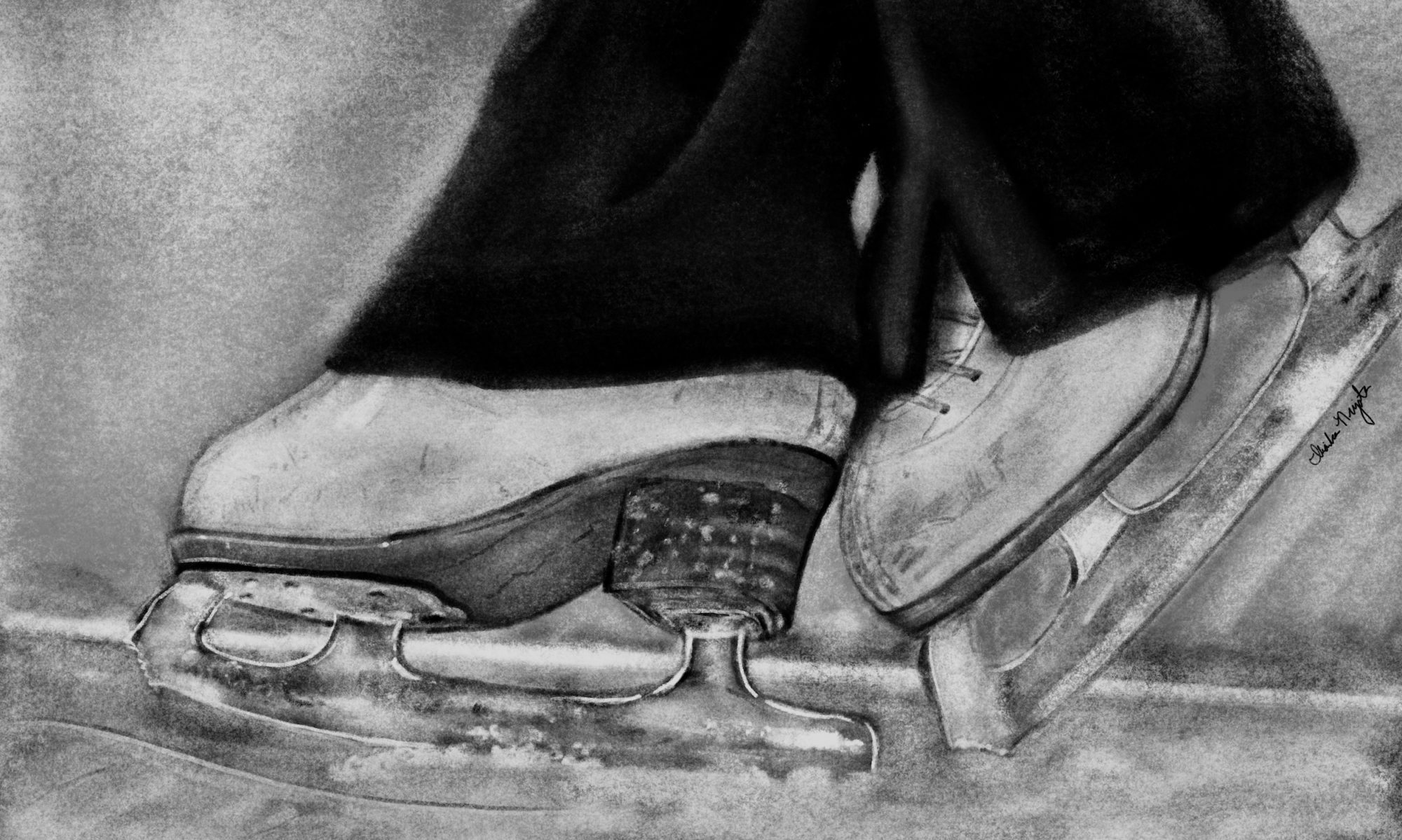Let’s look at a simplified view of your brain through the lens of mental skills training. There are two parts of your “brain”, the front brain and hindbrain.
The front brain is where your critic lives.
It’s the part of your brain that thrives on being in charge.
The hindbrain is where your muscle memory lives.
It’s the part of your brain that you want to be in to perform your best.
In any sport, you can’t perform up to your full potential unless you are in your hindbrain.
The minute you leave your hindbrain and enter your front brain, your body will organically feel unsafe.
When you are in your front brain, you are in your head.
When you are in your hindbrain, you are in body.
Being in your front brain feeds your anxiety.
In contrast, when you’re in your hindbrain you’re immersed in your current action.
When you’re in your hindbrain, you’re living in the mythical “moment”.
You feel your movement.
You’re immersed in what you’re doing.
You are focused.
Everything is easy.
Everything flows.
The hindbrain is like a hidden code. Here are some clues to find it.
When your coach tells you to “get out of your head,” or to “focus on the present”, they want you to be in your hindbrain.
When you’re told to “feel the movement” or “get into your body”, they want the same thing.
Your coach doesn’t have time to teach you how to bring yourself into your body, and in some cases they might not know how to.
Everyone gets into their hindbrain (aka body) differently. There is no one size fits all formula.
Mental skills training will teach you how to do this.
It can help you get into your hindbrain, to unlock your full potential during competition.
How do you get into your hindbrain
In order to unlock this hindbrain power, first, you need to be aware of what it’s like when you’re in your body vs when you’re in your head.
Once you understand the difference, you’ll be able to catch yourself when you’re in your front brain and bring yourself back to your hindbrain.
This is important, because there is no permanent state of being in your hindbrain.
You might have long periods of time when you are in your body, but something will always put you back into your head. This is human nature, we are wired this way.
So, it’s important to be able to identify when you’re in your head, so you can bring yourself back to your hindbrain, rather than trying to keep yourself in your body indefinitely.
Make sure you understand what it’s like when you are in your body versus when you are in your head.
If you don’t know the difference, you can’t practice bringing yourself back.
The key is awareness.
You are training your ability to identify the differences between being in your front barin, versus being in your hindbrain.
When you know the difference, you are in your head, you can get back into your body quickly and not miss a beat.
How do you know when you’re in your head?
How do you know you’re in your head?
- When you’re coaching yourself.
- When you’re cheering yourself on.
- When your critic is yelling at you.
- When you aren’t performing well.
- When you are easily distracted.
When you tell yourself, “Don’t move your left arm.”
That’s coaching yourself.
These types of thoughts mean you’re in your front brain.
When you say, “You can do it.”
That’s an example of cheering yourself on.
“You’re not leaving until you can do a good one.”
“You can’t do a good one, why even bother.”
“You’re trash.”
These are all examples of your critic yelling at you.
Some other examples include when:
- You’re messing up.
- You’re making mistakes.
- You feel like you’re slow, choppy, or robotic.
- Everything takes a lot of effort.
- You feel like you’re slow.
- You’re frustrated.
- You’re distracted by everything.
These are pretty self explanatory.
How to get back into your body
Once you can identify when you’re in your head, you can start practicing getting back into your body.
The best way to start is by doing a simple skill and asking yourself some questions.
Start with stroking around the rink.
Extend your leg, and ask yourself the following questions:
- What is it like in your head?
- What do you feel?
- What do you physically feel?
- Where do you feel it?
- What do you notice?
- What is it like?
- How would you describe it?
Do you feel the extension in your leg?
- The pull in your quad.
- The tension in your calf.
- The extension of your knee.
What does it feel like?
- A porcupine in your calf.
- A burning in your shoulders.
- A coldness in your muscles.
- A strong feeling.
- A stable feeling.
- A cat.
Your answer might be detailed, a color, or even a single word.
What’s important is that you do this slowly during an exercise or easy skill.
Ask yourself these questions after you’re finished with the skill, not while you’re in the middle of it.
Why? Because if you are thinking in the middle of the skill, you’re in your head not your body.
Finally, create a concentration sheet.
Draw a line down the center of a piece of paper.
On the left side, create a header called “In my head”.
On the right side create a header called “In my body”.
Now, pick a jump.
Write down what’s happening in your body when you’re in your head.
What you feel.
What you’re thinking.
How you’re performing.
Then repeat this for when you’re in your body.
Once you’ve filled out this sheet, you’ll have a better understanding of when you’re in your front brain and when you’re in your hindbrain.
So, when you notice you’re in your head, you can use this information to help bring yourself back into your body.
This article teaches athletes how to be aware of whether they are in their Front Brain versus Hind Brain and what it feels like.

